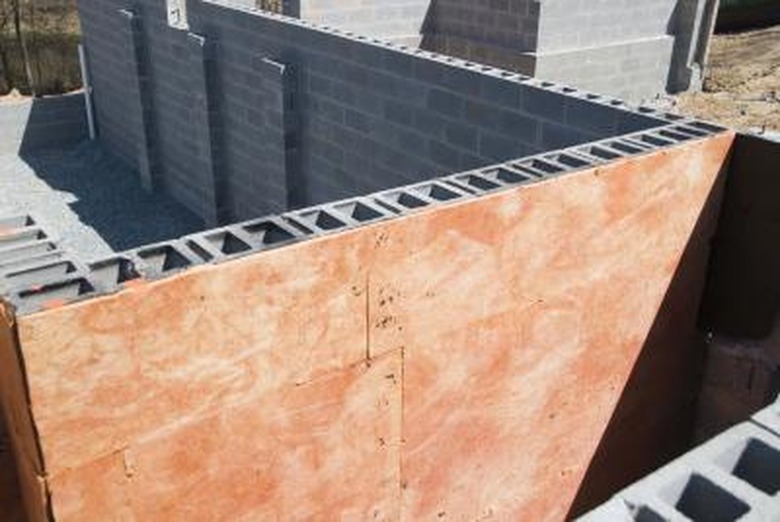How To Paint An Exterior House Foundation With Color Schemes
Things Needed
-
Information about materials used to build the foundation
-
Paint choices, online or in-store
-
Paint color choices, online or in-store
-
Garden hose or other source of water
Tip
Take time in creating your color scheme. Much work lies ahead, and you will ideally be living with the results of your decision for many years.
Choosing a color scheme for the exterior of your house involves making substantial decisions. In addition to covering a large space and using techniques that assure maximum wear, you may be interested in restoring colors historically appropriate to your house style or interested in the three- and four-color schemes popularized during the early 2000s. It is easy, amid these considerations, to omit the house foundation from your decorating plan. Not all foundation types benefit from painting. Learn how to integrate both painted and unpainted foundations into your decor. Learn also about good paint choices for foundations.
Deciding About Painting and Paint
Step 1
Determine whether your foundation is built of materials that will benefit from painting. Nearly always, stone foundations look and function better when not painted. Brick foundations can be painted or left as is. Concrete or concrete block foundations benefit from painting, especially if land slopes away from the house. You might, for example, see only a line of foundation at the front of the house, but by the time you have reached the back yard, the line has increased to several feet in height.
Step 2
Coordinate unpainted foundation with your color scheme by starting with the foundation color. Usually, this is a dark or light gray, but not always. A thin line of visible foundation, 6 inches or less, does not need to be factored into the color scheme. More visible foundations can be integrated by using a similar shade of gray or a related shade (gray-blue, gray-brown, or gray-green) as an accent color. Stone foundations, especially if they extend as high as porches, offer a wonderful resource for color schemes. Examine stones carefully for the subtle blues, browns, yellows and even pinks they may contain.
Step 3
Choose one of the numerous paint options that will last as long as possible on your foundation. Water-resistant and waterproof formulas have been developed for painting outdoor masonry. While waterproofing may not be an issue in very dry climates, most areas in the United States manifest some house-related water problems. Construction materials also play a part; a contractor tells the story of splashing water on a brick foundation and watching the water wick up into the stringers of a frequently paint-blistered wall. If you need waterproof paint, color choices may be somewhat limited. If your color will be genuinely visible, plan to use a similar shade in your overall scheme.
Pulling the Color Scheme Together
Step 1
Contact your local historical society or architectural aficionado group to find out about colors associated with the style and history of your house. Groups exist, for example, to preserve and restore Arts & Crafts houses, bungalows, Victorian "painted ladies," and houses sold in kits by Sears Roebuck. Local associations may have color-palette information about your neighborhood or even your house.
Step 2
Experiment with online or electronic paintless house-painting. A number of paint manufacturers provide free computer software that lets you see how your house would look painted in different ways or colors. Color schemes can be as simple or complex as you like and can include foundation treatments.
Step 3
Plan to carry through any woodwork painting scheme to include woodwork visible in the foundation. You may be the person most aware that window-well windows have the same slate-colored frames and burgundy mullions as the rest of the house. The eyes of others will, however, process the coordination, and your extra care will prevent your house from appearing to sit on an unrelated slab. If a dayliight basement foundation has been painted in an accent color, bring out other colors in the woodwork of the basement door.
